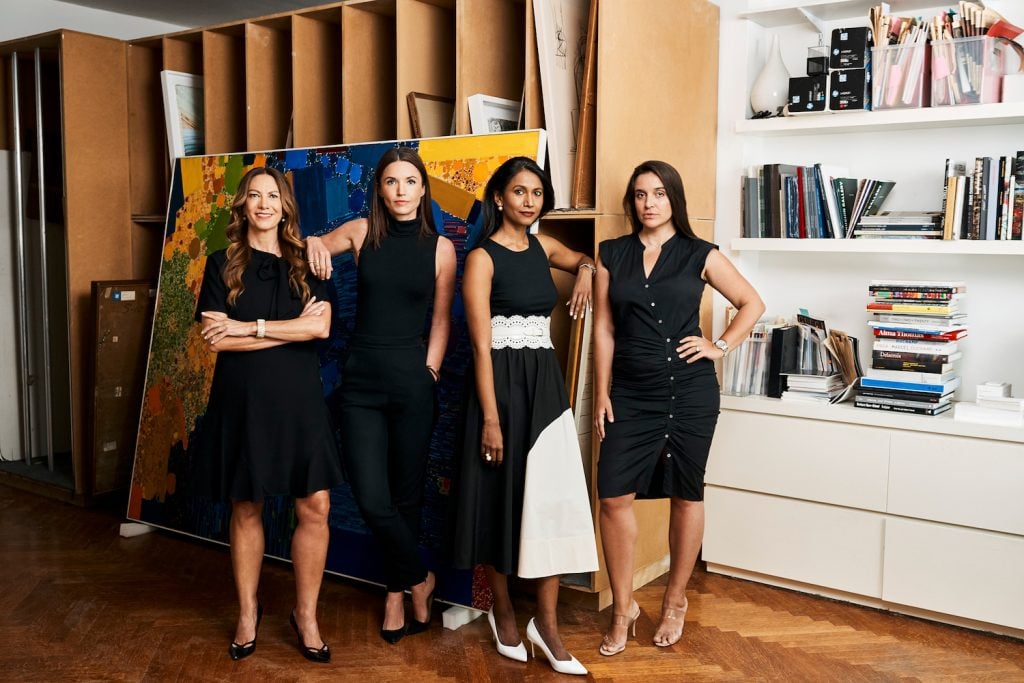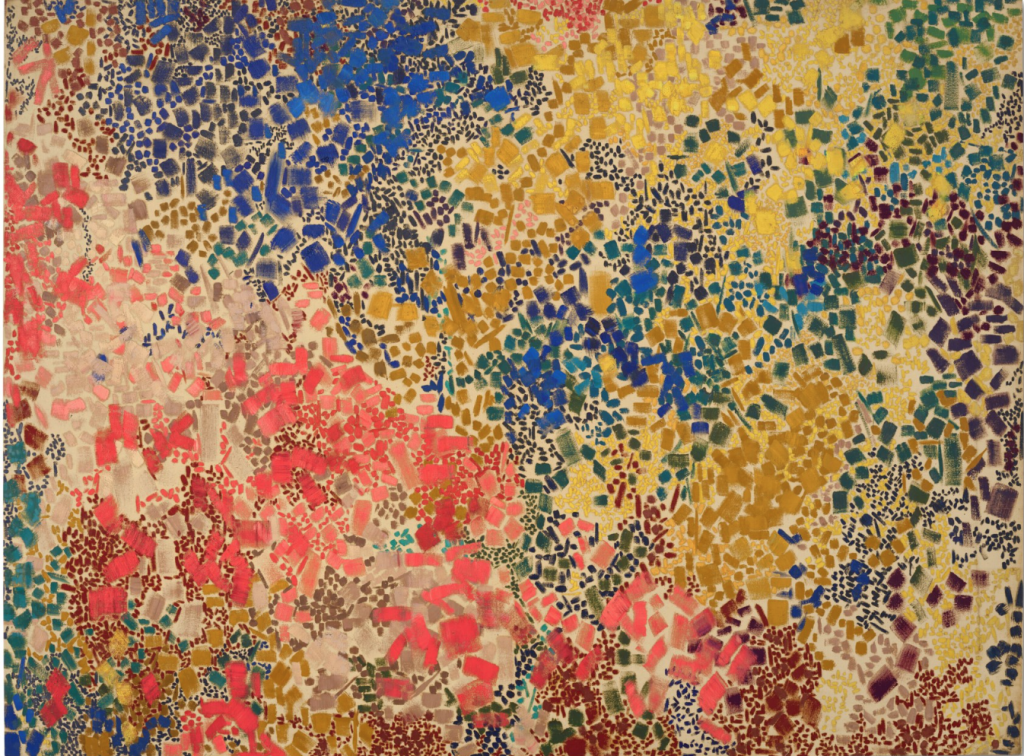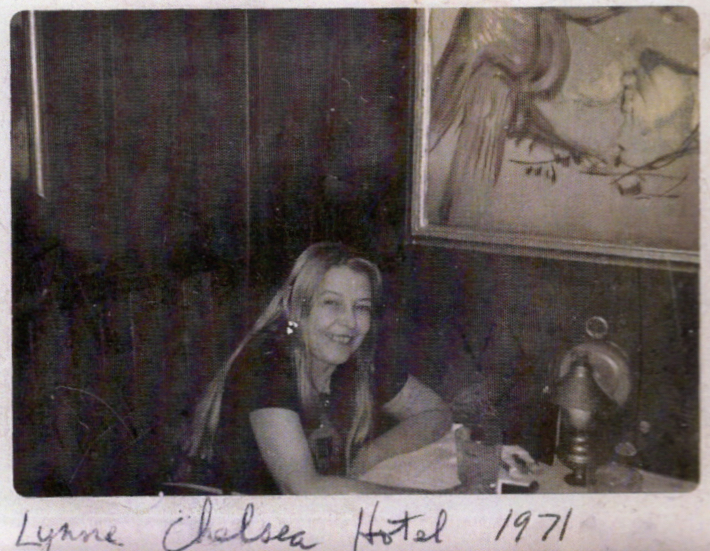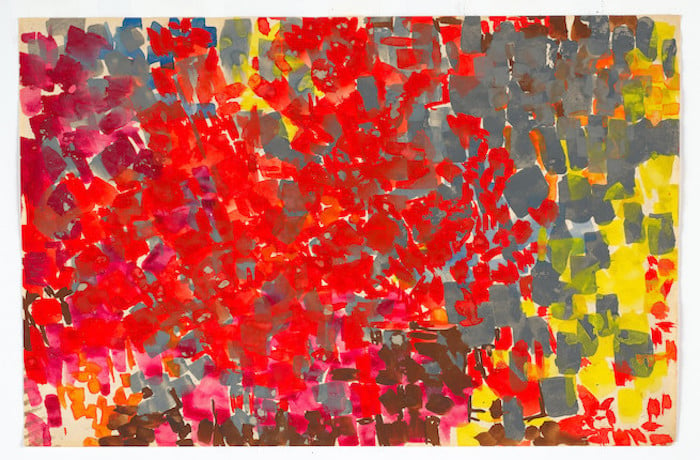Analysis
How Canny Market Players Helped Push Once-Obscure Painter Lynne Drexler’s Prices From Fifty Bucks to Over $1 Million
The painter lived for decades on a remote island in Maine.

The painter lived for decades on a remote island in Maine.

Eileen Kinsella

The Abstract-Expressionist painter Lynne Drexler toiled in obscurity for decades, much of it on a remote island in Maine. In the 10 years after her death, in 1999, a few regional auction houses and mid-range dealers discovered the artist and developed a five-figure market for her work.
Then, just this year, the auction market for Drexler’s work exploded. At a Christie’s New York mid-season sale in March, Drexler’s painting Flowered Hundred (1962), estimated at $40,000 to $60,000, rocketed to $1.2 million. (It was reportedly acquired by Amy Cappellazzo’s newly formed advisory firm Art Intelligence Global on behalf of a client.) Another work, Keller Fair (ca. 1959), sold for $69,300 compared with a high estimate of $15,000.
Christie’s broke that record just two months later when Herbert’s Garden (1960) hit $1.5 million (its high estimate was $100,000).

Lynne Drexler, Herbert’s Garden (1960). Photo: Christie’s.
“What is going on there?” wondered our columnist Katya Kazakina. Before 2020, none of Drexler’s paintings had sold at auction for even $10,000, she noted.
The Artnet Price Database lists just 30 results for Drexler’s work and eight of those, or just over 25 percent, sold in 2022 alone.
The larger canvases, especially from the years 1959 through 1962, are “quite rare,” said Andrew Huber, Bonhams head of sale for postwar and contemporary art in New York. What may have cost $50,000 in 2015, for instance, would be very different today: “They weren’t being given away, but now that $50,000 might be $500,000.”
Drexler studied under Hans Hoffmann and later Robert Motherwell while living in New York. She would often go to Carnegie Hall with her sketch pad and draw while listening to the symphony. “Then she would go back to the studio and render [musical] works,” said Huber.
Last week, Bonhams sold a major Drexler work at auction in Los Angeles, Grass Symphony (1962). With an estimate of $500,000 to $700,000 it was the highest price set on a Drexler painting yet. It sold for just shy of $1 million.
Along with Grass Symphony, Bonhams included a group of Drexler’s works in a recent selling exhibition of female artists that closed September 9. Bonhams said the sale received “really strong sales and interest,” but does not disclose prices from private sales.

Lynne Mapp Drexler at Chelsea Hotel, 1971. Photo: John Hultberg, © Estate of Lynne Mapp Drexler. Courtesy Berry Campbell, New York.
Some observers speculate that Drexler was overshadowed by her husband, the painter John Hulbert, who was supported and recognized by major New York galleries during his lifetime, but whose star has since faded.
Despite her talent and dedication, “the recognition never came and no one picked her up, aside from a group show here and there,” Huber said, and she eventually left for Maine.
In 1983, after Drexler moved full-time to Monhegan, a small, rocky island off the coast of Maine with a year-round population of just 64, according to a 2020 census, she painted every day.
Along with her now-prized abstract compositions, she was known around town for her tourist-friendly depictions of sailboats and lobster boats.
Her home was filled with rolled-up, un-stretched paintings that were only discovered after her death. It was then that people began to look more closely at her skillful brushwork and vibrant palettes that have drawn comparisons to Joan Mitchell and Jackson Pollock.

Lynne Drexler, Untitled (1959). Image courtesy Bonhams.
Now that the work has been brought to light, we can expect to see much more of it this fall.
Berry Campbell, which represents the Drexler estate, and Mnuchin Gallery, have organized a two-venue show titled “Lynne Drexler: The First Decade,” which marks the artist’s first solo exhibition in New York in 38 years. It features a curated selection of paintings and works on paper dating between 1959 and 1969, including works on loan from public and private collections, along with some never-before-seen works from the estate.
The show is organized in two chronological sections: Mnuchin Gallery will feature paintings from 1959 to 1964 and Berry Campbell will feature paintings from 1965 to 1969. Both are open from October 27 through December 17.
At the same time, Art Intelligence Global is including Drexler’s work in a Hong Kong exhibition titled “Shatter: Color Field and the Women of Abstract Expressionism.”
“The market is still at the very beginning of what it can do,” said Art Intelligence Global partner and Drexler collector Saara Pritchard. “There is a critical mass of the art world that hasn’t even seen her work in person, other than the now handful of pictures that have been at auction. And there hasn’t really been any serious scholarship since the Portland Museum of Art show [in 2008] and there haven’t been any real presentations of a big enough number for collectors to really understand who this artist is yet.”
So why are the works resonating so much with viewers and collectors today? “There is this thing in the air where people love a discovery,” said Pritchard. “Especially when it comes to the story of female artists. She has such a powerful story that’s so resonant and it’s so familiar.”